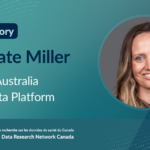PHRN’s Metadata Platform makes exploring linked data easier for researchers in Australia


In response to increasing demand for linked data from researchers, governments and policy makers, Australia’s Population Health Research Network (PHRN) launched its Metadata Platform, a centralized platform to help researchers explore datasets that are available for data linkage research across the country. The platform facilitates researcher exploration and assessment of linked datasets through an online data catalogue and accompanying metadata.
Established by the Australian government in 2009, PHRN is a national collaboration of data linkage units, a secure data laboratory and e-researcher services that support researchers in accessing linked population data. PHRN’s data linkage units connect existing information from different data collections, including health, education, justice and family, bringing together information from different sources that relate to the same individual.
Metadata is a critical component of the research infrastructure ecosystem ~ Dr. Kate Miller
“There is a wealth of metadata available, but it can be difficult to access and evaluate,” said Dr. Kate Miller, PHRN’s Coordinator of Science and Partnerships. This is because metadata — information that defines and describes the content, quality and condition of data, are held across multiple data custodians and jurisdictions, making it hard and time consuming to find. “There was a need for a centralized platform that brings all data collections available for linkage into a single place, maximizing asset visibility and encouraging the standardizing of metadata,” said Dr. Miller.
Cross-jurisdictional linkage is particularly important because the federal, state and territorial governments hold different data, Dr. Miller explains. Also, since the Australian population is quite mobile, people often access services from different jurisdictions, and data linkage allows researchers to connect people across borders. “Metadata is a critical component of the research infrastructure ecosystem,” said Dr. Miller. The Metadata Platform makes it easier for researchers to find metadata about routinely linked data and determine how useful the data collection might be for their specific research.
The Metadata Platform is a multi-phase project based on international best practices, including a model developed by Health Data Research UK for its Innovation Gateway. Working with a consultant, PHRN conducted interviews with experienced and novice researchers as well as data custodians and data service providers to understand the pain points in the current data linkage process. After an iterative design and testing process, the Metadata Platform was launched in September 2023. Today, researchers can easily search all routinely linked datasets using keywords, browse by theme or filter based on specific characteristics. Because the metadata are standardized, researchers can quickly compare and evaluate data. Researchers can also find documentation associated with each dataset, including links to variable lists, data dictionaries, data quality statements and publications based on available datasets.
According to Dr. Miller, a key goal was to deliver a platform that is simple to maintain into the future. “Now that the Metadata Platform is live, we’ll focus on ensuring the data collections are complete and up-to-date, while continuing to explore new opportunities to improve functionality and expand data collection holdings.”
